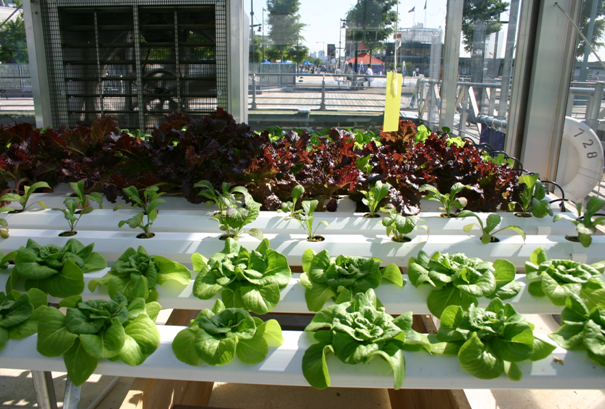Hydroponics is the increasingly popular practice of growing plants within an enclosed system with no soil involved. Plant roots can be anchored in a non-soil base such as peat moss or clay pellets. Some systems use only a nutrient-enriched solution of water and minerals or organic compounds.
The goal is for plant roots to have direct access to nutrients and oxygen. Growing in water or with some non-soil components increases the efficiency of the system. It also increases the effectiveness in overall growth and a bountiful harvest. Without the need to expend energy sending roots in search of essential nutrients, plants perform more efficiently. Plants simply grow faster and produce more abundantly. The system itself has a much lower amount of waste, is gentler on the environment, and suffers fewer ill-effects from extreme seasonal conditions.
Many systems are DIY models that operate within a home environment. These range from a simple herb or flower bowl on the kitchen counter to a large system that fills a garage or operates outside. The health benefits include greater control over the plant environment, prevention of soil-borne chemicals and disease that can infiltrate harvested foods, and the added advantage of a high-yield, self-reliant system in food production.
Commercial hydroponic systems have expanded throughout the world. They provide food sources that are dependable, grow quickly, and use fewer resources with a substantial return on the initial investment.
Many factors contribute to a healthy and successful hydroponics system. While hobbyists might reuse source materials, the original set-up needs to be made of clean, reliable materials. The water source should be dependable for the same reasons. Choosing the healthiest plants and the finest nutrient supplies assures greater success and stronger generations of future plants. A knowledge of pH levels includes understanding how the acid and bases of a solution affect different kinds of plants. Temperature control is essential for the prevention of plant loss. A loss of temperature control can mimic cold snaps in nature.
The more thoroughly a system is enclosed, the less loss of water and the better control of conditions in general. Reliable equipment in pumps, thermometers, etc. will prevent massive die-offs. Granted, that sounds serious, and it is. It is no different from losing a crop in the field to an early frost or to disease. The true difference lies in the control that hydroponics systems provide. This allows the prevention of such disasters in the first place.
Here is a brief overview of the basic varieties of hydroponic systems. Their fundamental differences lie in the varied approaches to an efficient absorption of nutrients and oxygen.
- The drip system allows for the controlled drip of nutrient-rich water to the medium in which roots grow.
- The ebb and flow system follows a timed water release practice. Nutrients and water are allowed into the root system on a timed rotation. The water drains away slowly as roots absorb food. Some plants function better when regularly exposed to dry conditions.
- Aeroponics involves misting roots with a nutrient solution within a closed environment so that roots absorb food. Regularly exposing roots to air allows greater absorption of oxygen.
- Wicking is exactly what it sounds like. Wicks, usually cotton, draw nutrients up to plants from a growth medium like vermiculite.
- DWC stands for Deepwater Culture. This is a simple reservoir system where roots to hang suspended in the nutrient solution. Using an air pump such as the ones seen in aquariums pumps oxygen into the solution for the roots.
Hydroponics have gained popularity because the system is more efficient than soil-based systems. It protects plants better than traditional agriculture and results in a higher yield. It can offer a more independent lifestyle.

